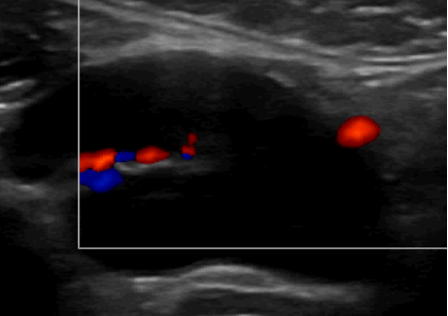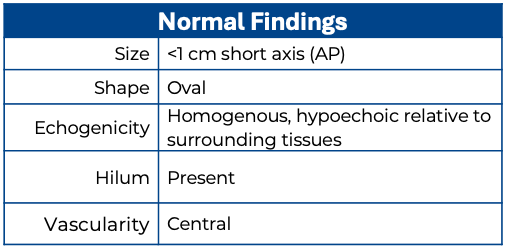What is Normal
Normal Lymph node:
Size: Lymph Nodes in the head and neck are generally considered abnormal if they measure greater than 10 mm (1 cm) in the short axis. The exception is the submandibular region, where a short axis of up to 15 mm can be considered normal (8).
The axial short-axis diameter of lymph nodes is more clinically significant, whereas the length of the node in the long axis is less standardized and often less clinically significant. However, the lymph node should still be evaluated in all three planes for a comprehensive assessment. (8)
Shape: Normal lymph nodes are ovoid, or “kidney shaped.“ However, in the submandibular region a normal node can appear round rather than ovoid.
Echogenicity: Normal lymph nodes have a cortex and medulla. The outer cortex is more hypoechoic due to lymphoid follicles, while the central medulla is more hyperechoic due to a dense network of lymphatic cords and a central sharp linear hyperechoic fatty hilum containing blood vessels.
Surrounding tissue: In a normal or reactive lymph node, the surrounding tissue will not typically demonstrate anatomical or echogenic changes.
Vascularity: in a normal node, the central hilum is vascular on color Doppler.

Figure 4. Normal Lymph node with color Doppler.

